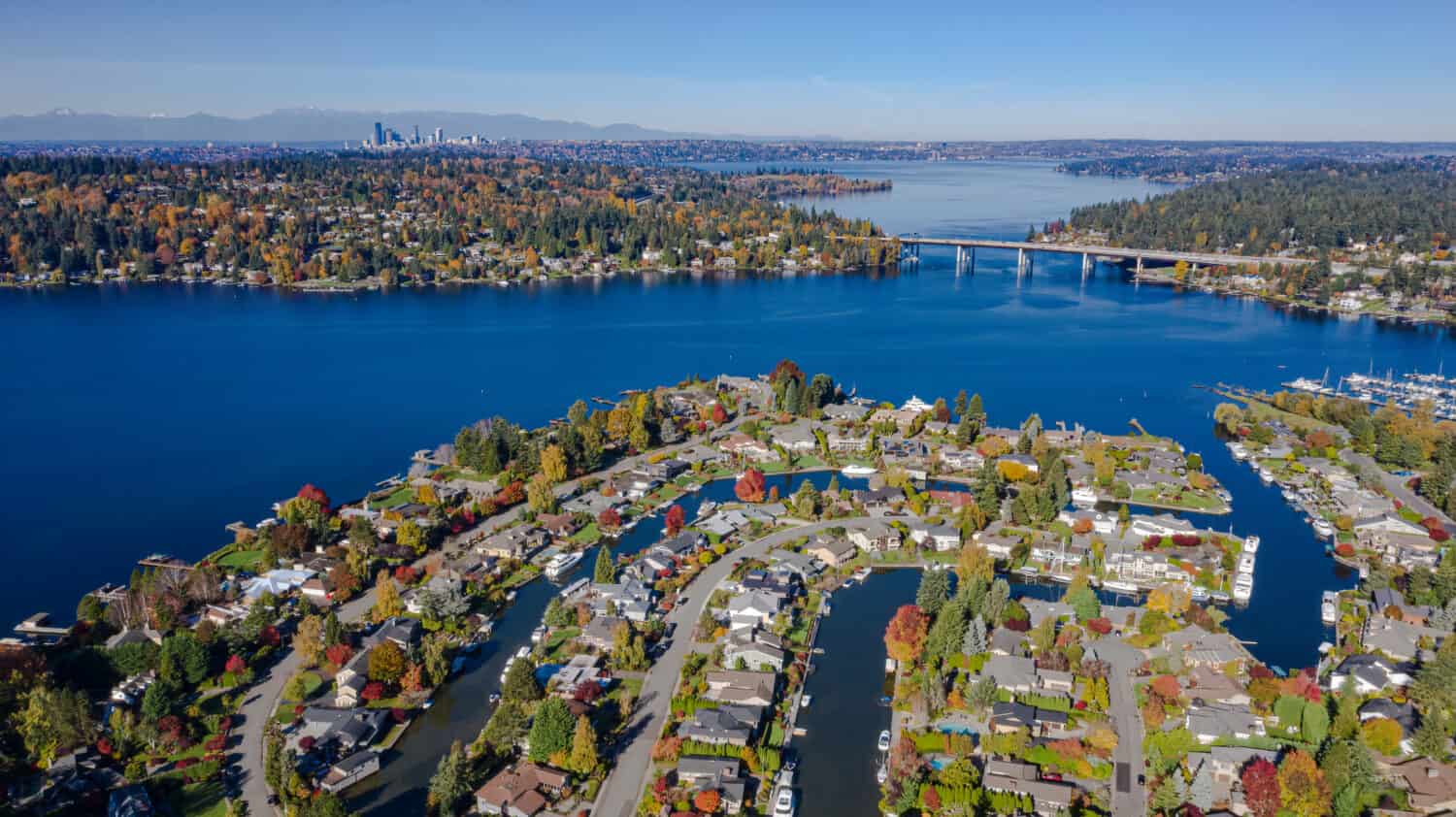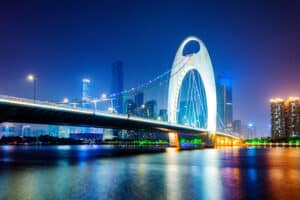Washington is the 18th largest state in the United States. Just how big is the Evergreen State? Let’s find out!
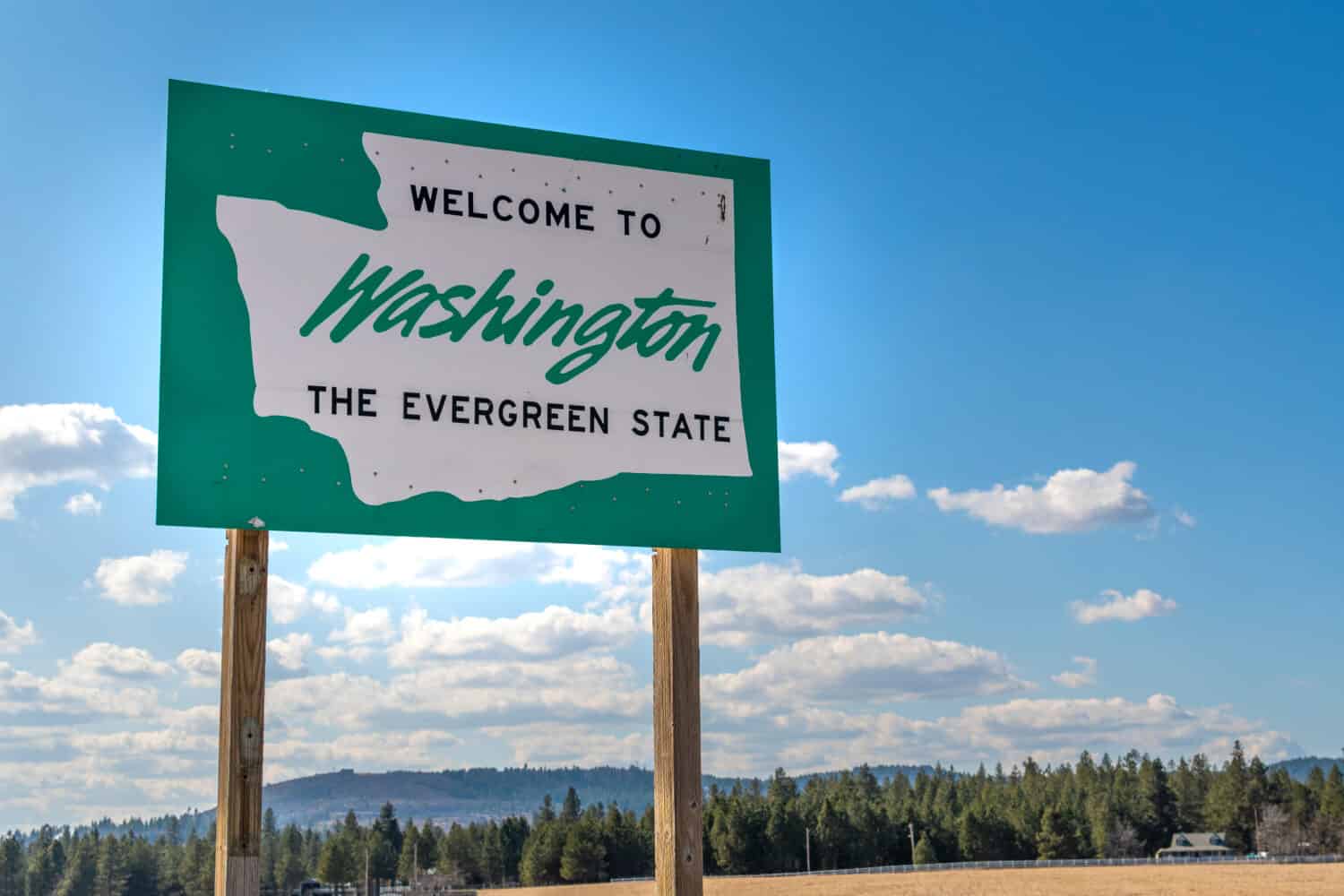
Washington is the only state in the United States that is named for a president.
©Kirk Fisher/Shutterstock.com
Length and Width of Washington
The state of Washington is tucked away in the Pacific Northwest of the United States. It is the second smallest state of the four states on the West Coast. Though it is smaller than Oregon, California, Alaska, and Hawaii, it is larger than all East Coast states.
It is one of 13 states that border Canada. Washington’s Pacific shoreline is 240 miles long, and the state is 360 miles wide. The Canadian border runs for 280 miles to the north. Washington has 13 drivable border crossings. You can even take a ferry from Seattle to Vancouver Island. It is only two hours and 45 minutes!
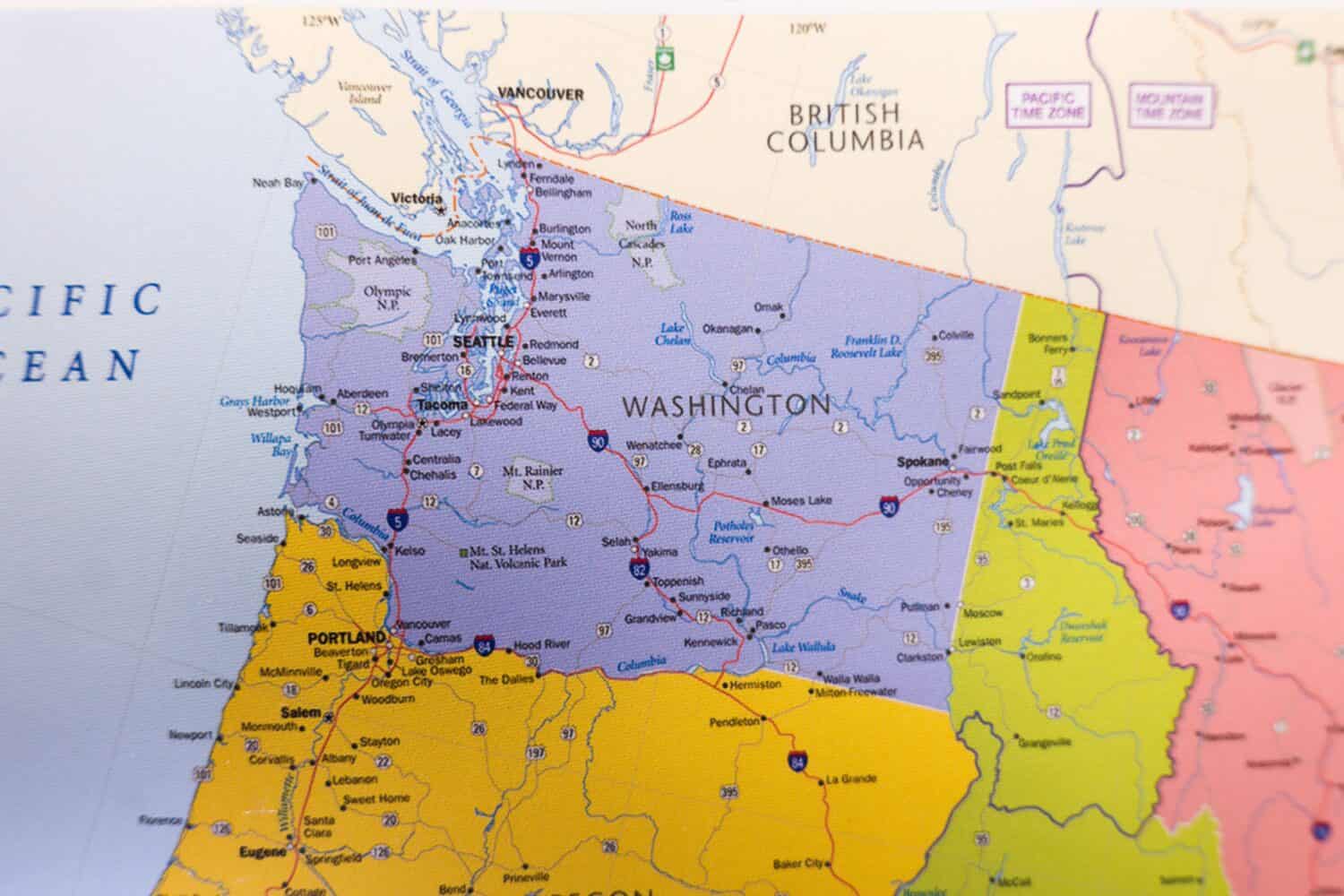
Vancouver is only 2.5 hours away from Seattle.
©Artyom Lezhnyuk/Shutterstock.com
Washington: Square Miles and Square Kilometers
The Evergreen State covers a total of 71,362 square miles which is 184,827 square kilometers. The area is 66,544 square miles of land and 4,757 square miles of water. In kilometers, that area of land is 172,587 square kilometers, and of water is 12,237 square kilometers or 6.6% of the state.
Washington: Acres
Washington’s land area covers an estimated 45,663,000 acres. The largest national forest in the West Coast state, the Okanogan National Forest, encompasses 1,499,023 of those acres. However, the park is managed alongside the Wenatchee National Forest. That brings its acreage to 3,239,404. In fact, half of the state is forested, with 37% privately owned and 63% managed by the government.

National parks run rampant in the state, with abundant evergreen forests.
©Velimir Zeland/Shutterstock.com
Washington Compared to the Largest States
Alaska is the largest state in the United States and on the West Coast. At 665,385 square miles, it is 9.33 times larger than Washington. Washington is 10.72% of Alaska in terms of land area. It is also smaller than the two other states on the West Coast, California and Oregon.
California is 2.3 times larger than Washington at 163,695 square miles. And Oregon is 1.4 times larger at 98,381 square miles.

The West Coast includes Washington, Oregon, and California. Some say it also includes Hawaii and Alaska.
©Kent Weakley/Shutterstock.com
The second-largest state in the nation, Texas, is 3.9 times larger than Washington at 268,596 square miles. The fourth largest state, Montana, is a little over double the size of Washington at 147,040 square miles.
Washington Compared to the Smallest States
The East Coast state of Rhode Island is the smallest state in the Union. Its land area is 1,214 square miles, which is 2.17% of the land area of Washington. Washington is 46.15 times larger than Rhode Island. In fact, Rhode Island would fit in Okanogan National Forest, which is about 2,342 square miles.
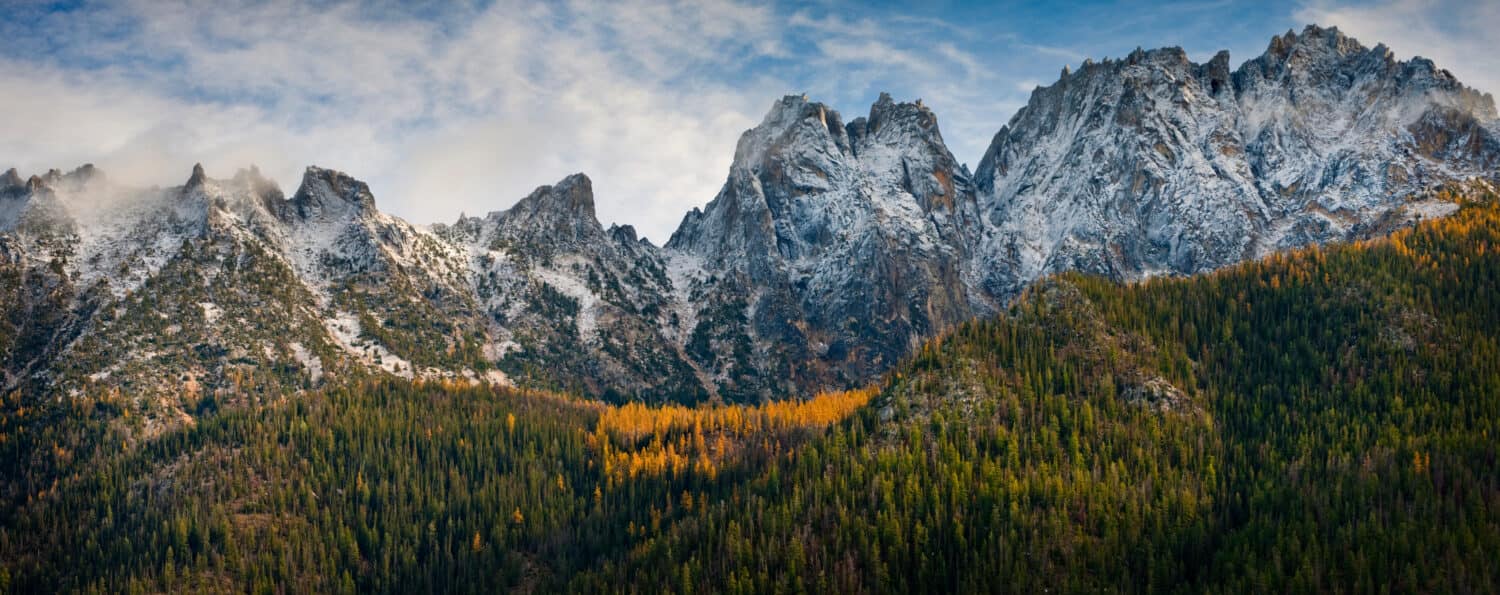
Washington is larger than any East Coast state. It was the 42nd state to join the United States.
©Edmund Lowe Photography/Shutterstock.com
Delaware is the second smallest state in the U.S. It is 1,982 square miles. Rhode Island and Delaware combined don’t fill up the state of Washington!
Percentage of U.S. Land
Washington’s total land area only accounts for an estimated 1.88% of total land mass of the United States. Similar states include North Dakota at 1.86%, and Oklahoma and Missouri, both at 1.84%. The percentages are close like this because Alaska occupies an estimated 17.5% of the land. Then Texas owns just over 7%, and California accounts for 4.3% of land in the United States. At the end of the spectrum, Rhode Island only accounts for 0.04%, and Delaware follows with 0.07%.
Out of Washington’s total land area, the federal government owns 28.51% which is 12,173,814 acres. That is moderate in terms of government owned land. Nevada has the most government owned land at 84.94% and Connecticut has the least at 0.28%.
Washington Population
Washington is the 13th-most populous state. Alaska it is one of the least populated states, despite its land size. Only around 731,000 people live in Alaska’s vast expanse, making it the least densely populated state in the nation and the third-least populous state overall. (Population density is calculated by the number of people per square mile.) The only states with fewer people than Alaska are Wyoming (580,000) and Vermont (649,000).
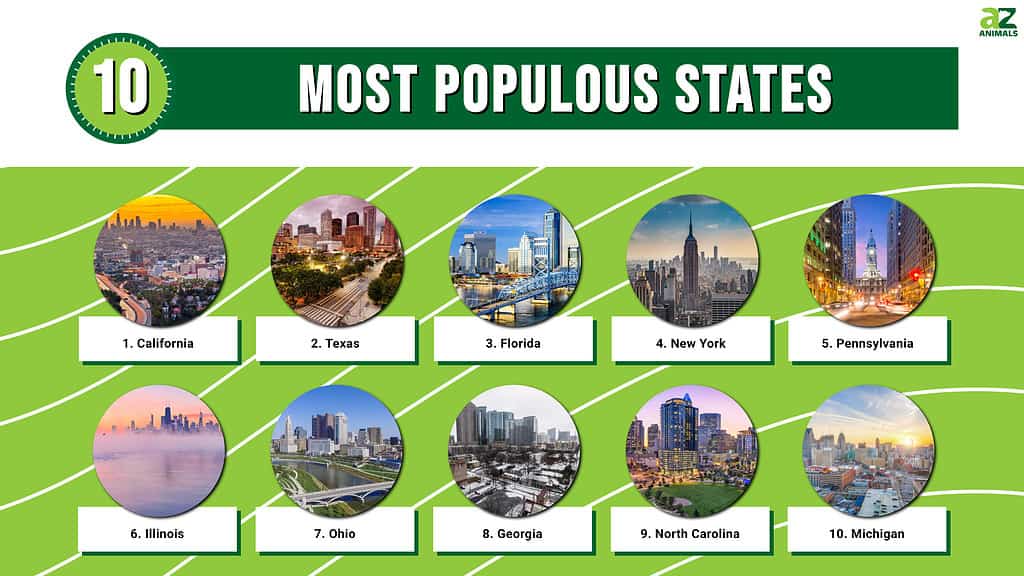
Washington’s population is estimated around 7.7 million people. Per the U.S. Census Bureau, the state added over 45,000 people between 2021-2022. Washington had the eighth-largest population jump during this time period.
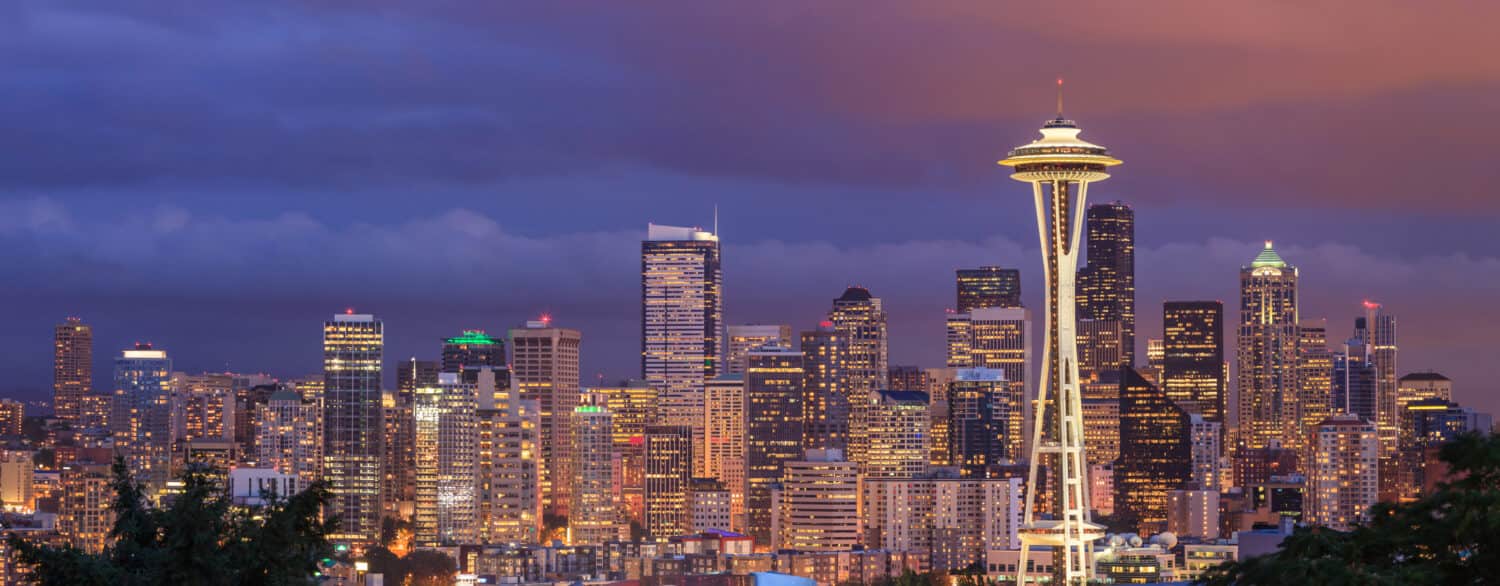
Seattle is the largest city in the state. There is an estimated
733,919people living in the city.
©Stas Moroz/Shutterstock.com
Other Facts About Washington
Though Washington is fairly big, it isn’t the largest state. However, it does have the largest ferry fleet in the United States. The state’s 21 ferries cross Puget Sound and the greater Salish Sea to access Tacoma, Washington, Sidney and British Columbia. The routes are a marine highway for businesses, tourists and even daily commuters!
The Evergreen State may be known for its abundance of tall trees, but it is also a titan in producing wine. The state is the second-largest wine producer in the United States. It has over 1,050 wineries that contribute over $8 billion to the annual in-state economic impact.
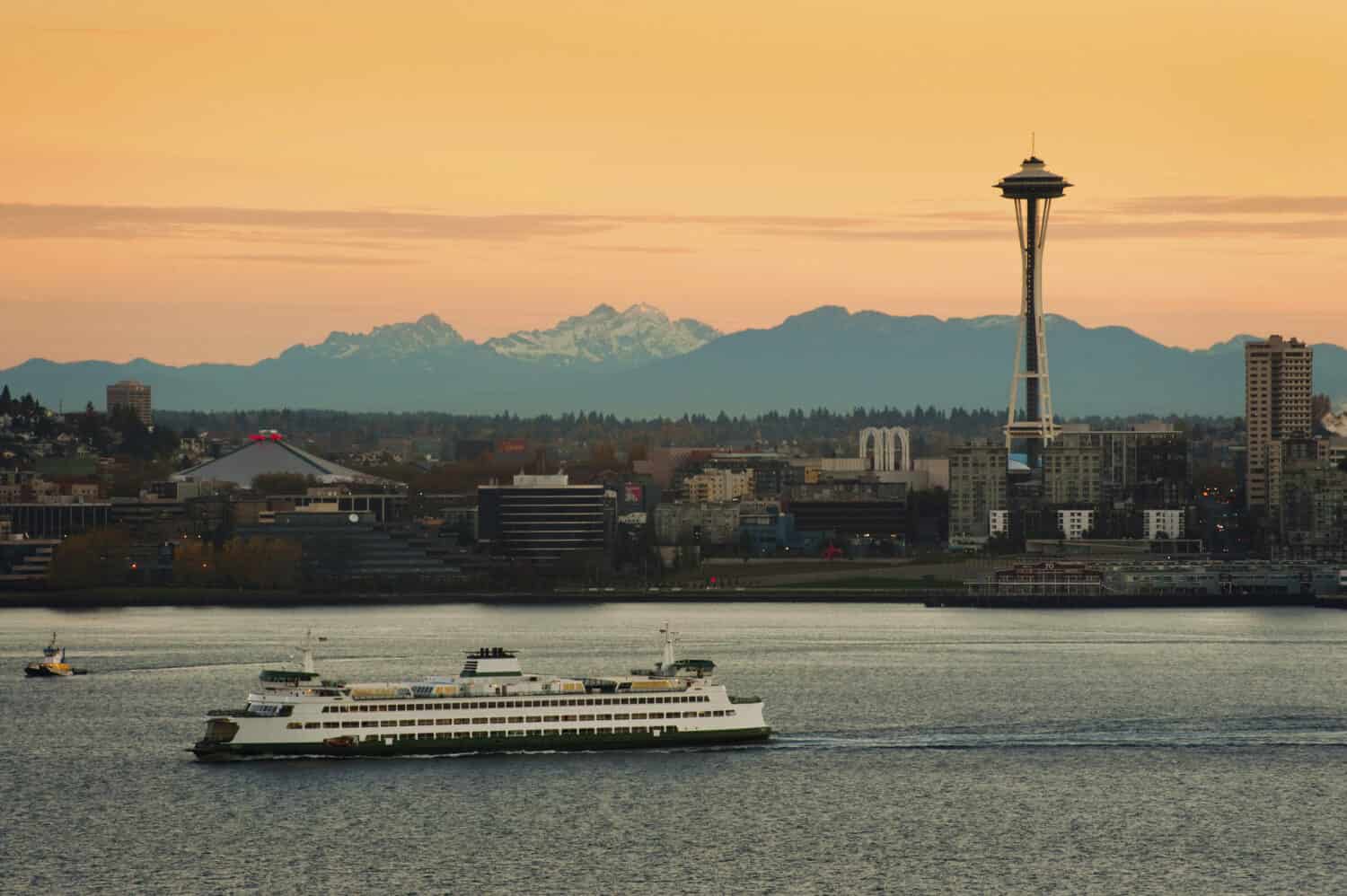
Washington’s ferry’s carry nearly 24 million passengers to 20 different ports of call.
©Edmund Lowe Photography/Shutterstock.com
Almost half the state is covered in dense forest, so it is no surprise that Washington is the second-largest lumber producer in the United States. This profession supports approximately 42,000 workers and its gross business income is around $36 billion annually.
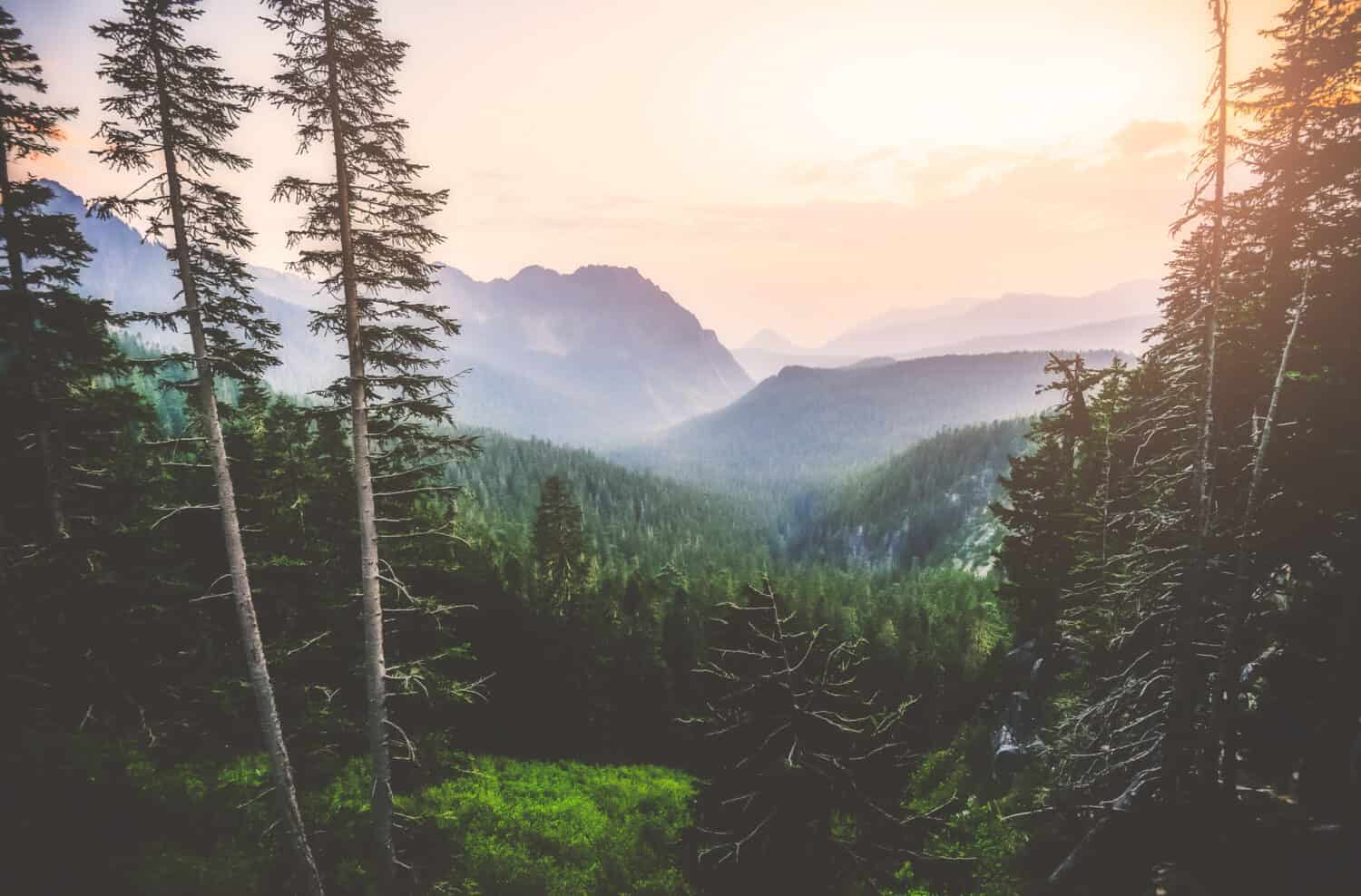
Washington is slightly behind its neighboring state (Oregon) for producing lumber.
©Checubus/Shutterstock.com
The Evergreen State also produces more apples than any state, in part due to the wet weather and great growing conditions. Nutrients seep into the soil from the over 3,000 glaciers in the state. In fact, Washington comes in second behind Alaska for the most glaciated state. Washington also has the largest hydropower producer in the United States. The Grand Coulee Dam produces enough power to supply around two million homes with electricity for a year. Set among the forests is the longest contiguous beach in the country. Long Beach Peninsula stretches 28 miles. Visitors can enjoy oceanfront views on a scenic boardwalk.
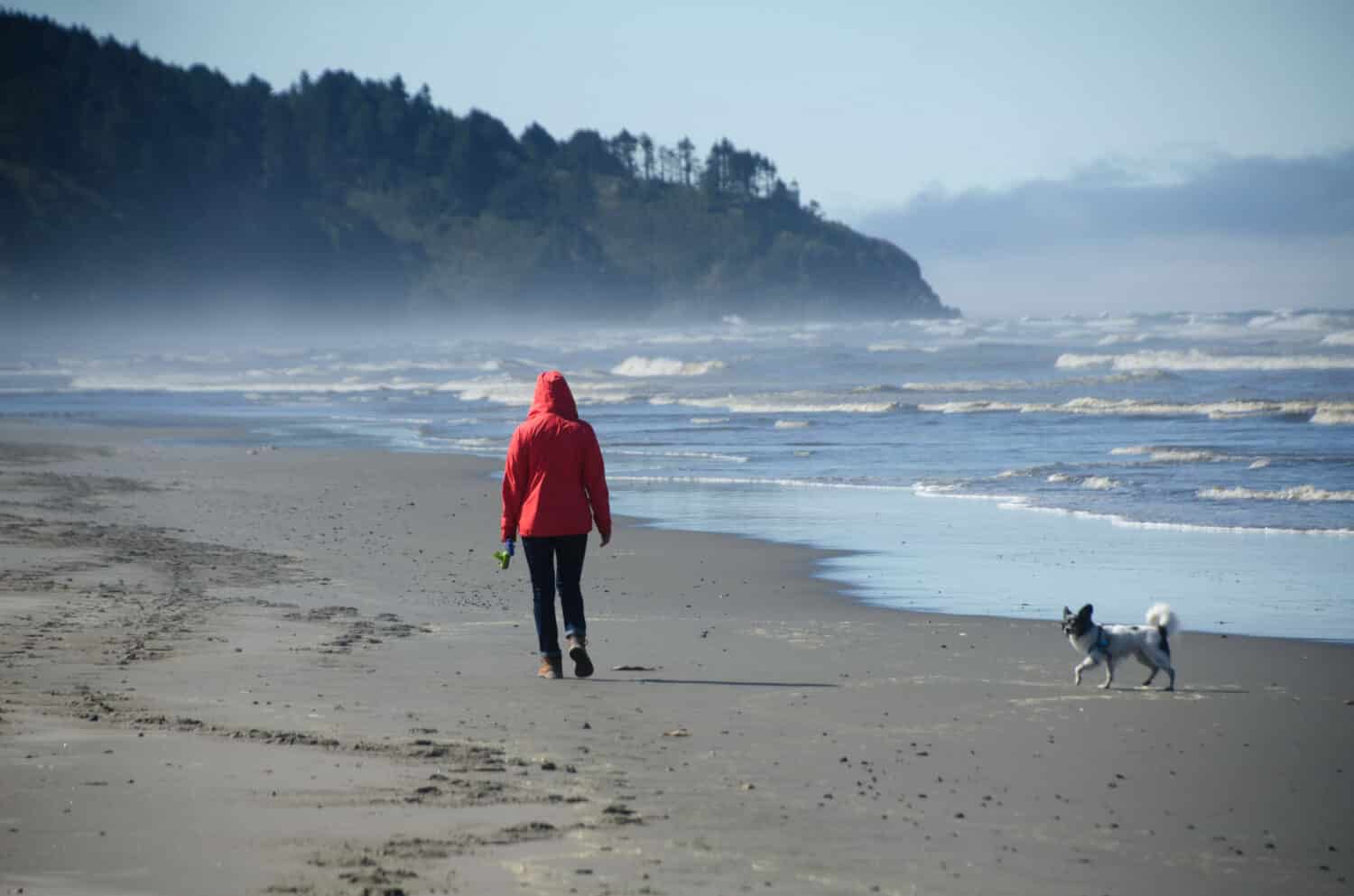
Washington has a little something for everyone, from scenic mountains to long stretches of beach!
©Dmitri Kotchetov/Shutterstock.com
Washington’s Sizes Recap
| Measurement | Size |
|---|---|
| Area of Land | 66,544 sq mi (172,587 km2) |
| Area of Water | 4,757 sq mi (12,237 km2) |
| Total Area | 71,362 sq mi (184,827 km2) |
| Width | 360 mi (580 km) |
| Length | 240 mi (400 km) |
| Acreage | 45,631,579.71 acres |
Thank you for reading! Have some feedback for us? Contact the AZ Animals editorial team.

